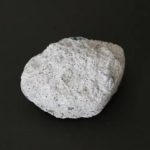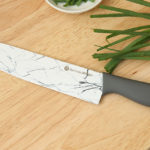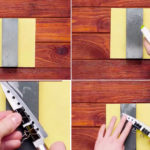During usage, we can’t avoid the situation where knives become dull. This not only causes inconvenience but also reduces the lifespan of objects. Regular knife sharpening not only helps cutting and slicing food quickly but also saves time and makes the dishes more appetizing. Furthermore, sharp knives and scissors prolong their lifespan, helping homeowners save costs in the long run.
Therefore, understanding how to properly sharpen knives is essential knowledge for every chef, from professionals to home cooks.
1. Using a sharpening stone
– Oil stone: Apply some oil to the surface of the stone. Hold the knife at an angle of about 20 degrees to the stone surface and sharpen in a curved motion from the handle to the tip of the blade. Repeat this process several times until the knife feels sharp.
– Water stone: Soak the stone in water until no more air bubbles emerge. Sharpen the knife on the wet stone, similar to the oil stone. Water stones need to be carefully stored to prevent excessive erosion.
2. Using newspaper
Roll the newspaper into a cylinder shape and secure it with tape. Dampen the newspaper roll with water.
Rub the knife blade on the newspaper at a certain angle, ensuring both sides of the blade are evenly rubbed. This action helps straighten the knife blade and temporarily create sharpness.

3. Sharpening a knife with a ceramic plate
Place the plate face down to expose the abrasive bottom.
Hold the knife tilted at an angle of about 20 degrees and sharpen the blade on the abrasive part of the plate bottom. The sharpening movement should be firm and regular.
4. Using sandpaper
Place the sandpaper on a flat and rigid surface like a wooden cutting board.
Hold the knife at an angle and rub the blade against the sandpaper, moving the knife in a curved motion from the handle to the tip of the blade. Continue until the desired sharpness is achieved.
5. Using another knife
Hold the knife to be sharpened and use the back of another knife (dull side) to sharpen.
Hold the two knives parallel and rub the blade to be sharpened on the back of the other knife, ensuring even sharpening of the blade.
6. Using knife sharpening tools
Knife sharpening tools are useful aids. Nowadays, knife sharpeners are equipped with many convenient functions such as sharpening serrated blades, straight blades, scissors, screwdrivers, etc.
Depending on your usage needs, you can research and choose knife sharpening tools with suitable functions that meet the needs of your family.
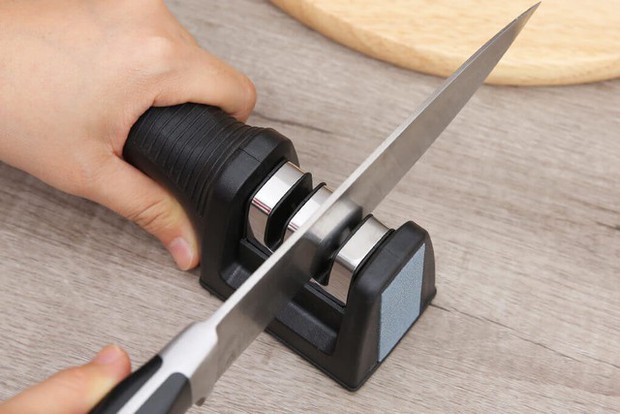
Knife sharpening safety note: Wear protective gloves and sharpen the knife carefully to avoid unnecessary accidents.
Tips to keep knives sharp and shiny:
– Regular knife sharpening: Perform regular sharpening every 1-2 months or when the knife feels less sharp.
– Choose suitable sharpening tools: Use high-quality knife sharpening stones suitable for each type of knife and the sharpness of the blade. Oil stones are suitable for European knives, while water stones work well for both Asian and European knives.
– Proper knife storage: After use, rinse the knife with warm water and dry immediately. Avoid leaving the knife damp as it can corrode the blade.
– Using knives for their intended purpose: Do not use a chef’s knife to chop bones or use a knife to open bottle caps. Each type of knife has its own specific usage.
Using a Sharpening Stone: Tips for Choosing and Sharpening Your Razor
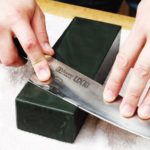 Stone: Tips for Choosing and Sharpening Your Razor’>
Stone: Tips for Choosing and Sharpening Your Razor’>Sharp knives can make a huge difference to your kitchen experience, so don’t forget to keep them sharpened! Electric Appliances XANH’s “Tips for the Kitchen” section provides detailed advice on how to choose the best knife sharpener stone to keep your tools in good condition. Read on to find out more!


























